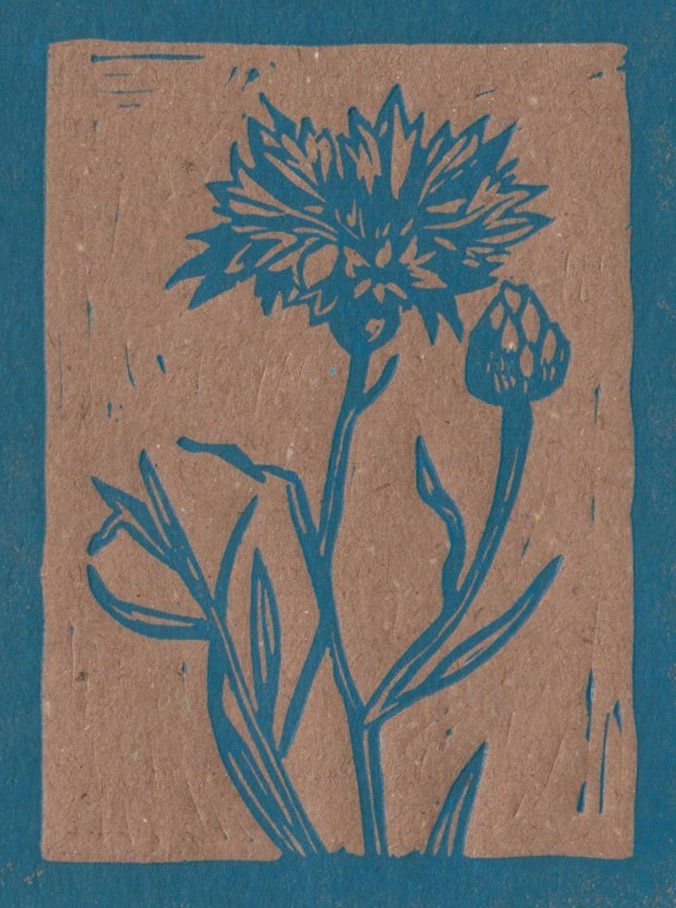The First Issues of Two New Literary Journals Published
Lugemisaeg 6 minThe ELLA and JESS literary journals bring together short prose written in both Estonian and English.

People interested in contemporary Estonian literature have a reason to be excited with the publishing of two new journals, ELLA (Eesti lühilugude ajakiri) and JESS (Journal of Estonian Short Stories), the first being in Estonian, and the second in English. The aim of these new literary journals is to strengthen the tie between Estonian literature and the English-speaking reader interested in Estonian literature as well as make Estonian literature more friendly for your wallet. It is the opinion of the journals’ editorial team that the authors in ELLA and JESS should receive also a respectable honorarium for their stories. At the beginning the journal will not be offered in shops, but it is possible to order them straight from the editorial team. The publisher, MTÜ Villane Raamat, was kind enough to answer our questions.
What prompted the creation of the journals?
As with all things like this, the way ELLA and JESS emerged is quite a long story. The short version is that they were thought up separately by the founders, James Baxenfield and Sandra Saul. Sandra had worked in publishing for some time and had thought of starting up an Estonian literary magazine for a while. James on the other hand had lived, studied and worked in Estonia for a few years and came up with the idea of JESS whilst he was studying in Budapest. Estonia was the place where he spent his free time, as opposed to England, and he’d decided to move back after he’d finished his studies in Hungary. In the meantime, he noticed that there was a lack of affordable Estonian fiction available in English. Of course there are things like the ELM that give overviews of contemporary Estonian fiction and has various feature articles. And, there are many good translations available, though they are somewhat expensive.
When James told Sandra about his idea to start something called the Journal of Estonian Short Stories (JESS for short) she told him about her idea to create a new Estonian language magazine. It was purely coincidental that a corresponding Estonian version of the journal could be created using a woman’s name as an acronym. Nevertheless, the “sister” journal concept was born. “Sisters” because while they are related, they are effectively autonomous publications.
Since then ELLA and JESS have undergone various changes in the development process (largely due to a lack of finances), but this “sister” concept has remained. We found that this could fill a number of gaps that other Estonian publications don’t currently fill: accessible Estonian fiction for foreigners; for Estonians abroad; for descendants of Estonians who no longer speak Estonian as their primary language, etc. In one way or another, ELLA and JESS provide a platform for most combinations of writers and readers of Estonian fiction. Villane Raamat is currently expanding its activities, developing a creative writing programme for Estonian youth in economically disadvantaged areas. The programme is called “Etc.”, its name deriving from one of its main goals: to promote “expression through creativity”, whilst the other goal is to encourage “non-formal language learning”. The programme will consist of a number of workshops around Estonia, both in Estonian and English, outside of Tallinn and Tartu in places where there may be less accessible activities on offer for youth. These workshops will be lead by published and experienced authors. We’re also speaking with a number of artists (mostly from Tartu) who are interested in getting involved and expanding the scope of Etc. We hope to have the programme up and running by late Spring.
Did the editorial team receive a lot of texts that came after the first call for stories? Was the competition intense?
In total there were over fifty stories that came. Among them were miniatures, which as a genre we thought of addressing in a future issue. Some authors sent several stories or even an entire collection. There were two rounds in selecting them, which cut the number in half.
In looking at the list of contributing authors, it seems it has more to do with younger authors.
The ones chosen this time were of younger authors, but work came from authors from different generations (and from among them made it also to the second round).
Who works on the editorial team?
The editorial team to date has been made up of a fluid group of volunteers from the local Estonian and international community of Estonia. For example, one of our voluntary proofreaders is a graduate of English language and linguistics from Spain. Our steering editor is Martin Nõmm, a Masters student of English language and literature.
Who designed the journals?
We don’t really have a designer at present. The general concept of the journals was set by co-founder and director James Baxenfield. That’s is a general colour scheme of blue, black and white (the Estonian national colours) in addition to various shades of brown. Displaying the names of the journals at 90 degrees on the covers and promotional material was something that emerged very soon and we will keep this as a static feature because it is quite distinctive. We hope that as the journals grow that we might attract some designers willing to work with us, both on developing the design features of ELLA and JESS and possibly getting involved with Etc. The blue cornflower logo of Villane Raamat was also chosen by James Baxenfield and made by Tartu-based artist Kristiina Sirkel.
Note on the logo by Kristiina Sirkel:
Once, I think it was a sunny summerday, James asked me whether I can make a linocut for his not-for-profit publishing house. Since he’s a good friend and the project seemed very interesting, I said yes. It was his idea to have a corn flower as a logo and I was really happy to hear that. It’s a beautiful flower, furthermore it’s a symbol that leads us far back to the roots yet it’s around every summer. The concept of JESS and ELLA is similar – let people tell Estonian stories that happened a while ago or not so long ago, about something we don’t know anymore or about something that surrounds us every day. Stories from back then or now, from here or there.
Go visit the weblog of Villane Raamat.
